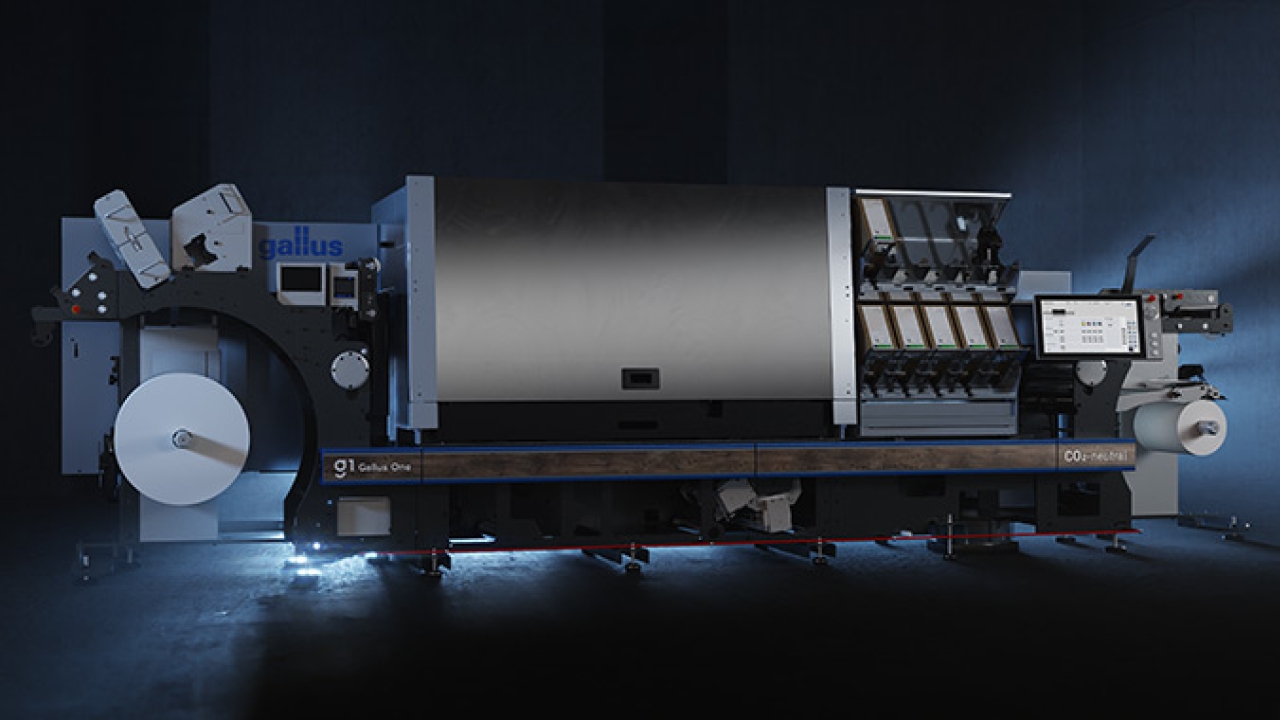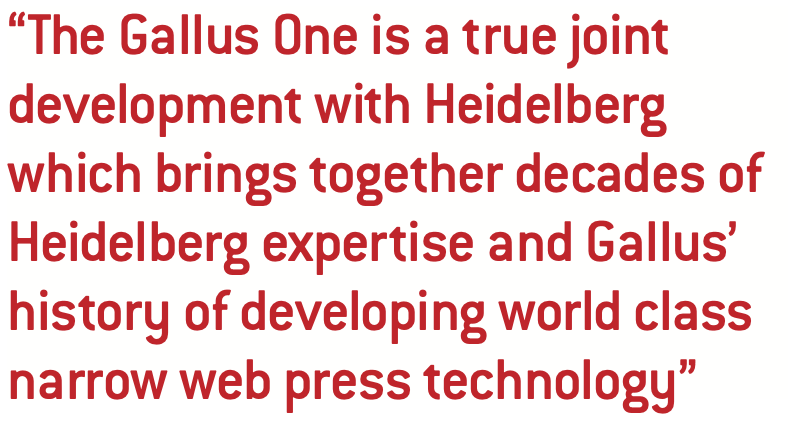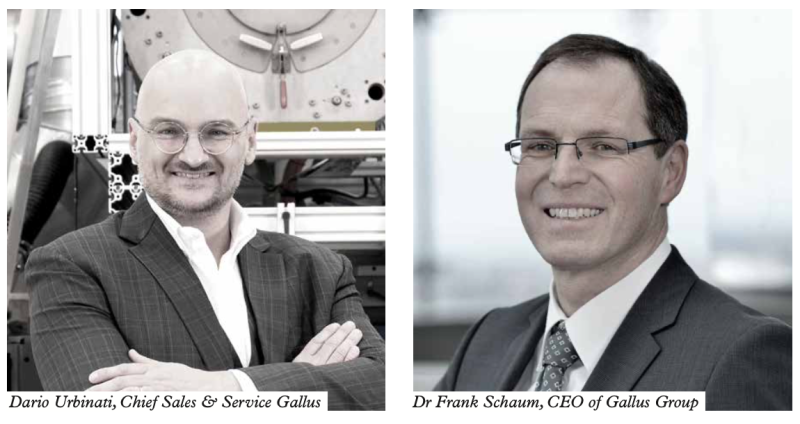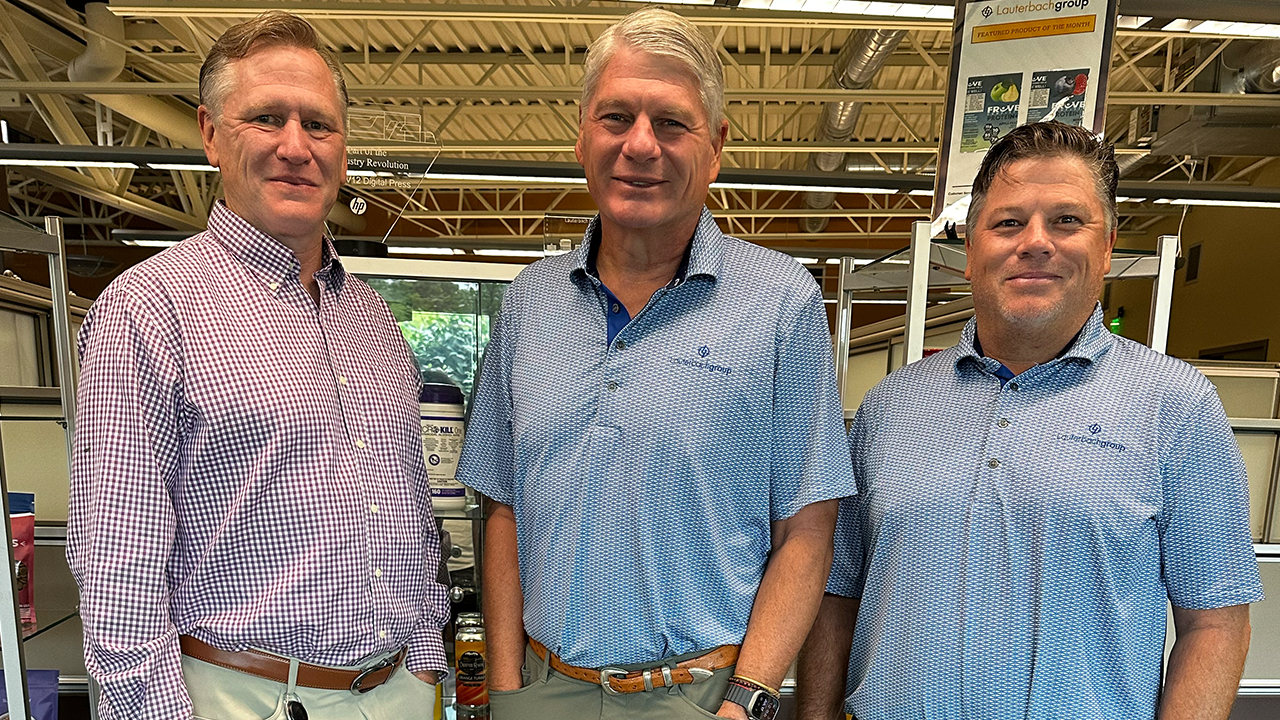Gallus launches roll-to-roll digital press
The new Gallus One press forms part of a wider program to reinvent the label industry’s view of digital printing.

Gallus is looking to drive a digital transformation in the label industry with the launch of a standalone digital press targeted at the mid-market sector.
Based on the Labelmaster platform, the Gallus One is a 340mm wide roll-to-roll UV inkjet press printing at 70m/min at 1,200 DPI in four colors + White. The press retains many of the advanced features of the Gallus Labelfire 340 including full automated cleaning of inkjet heads and a camera-based missing nozzle and density unevenness compensation system.
 While the Gallus Labelfire 340 remains Gallus’ premium digital platform, the company believes the Gallus One, with its compact footprint, high level of automation and ‘extremely competitive price’, addresses a major gap in price performance sector of the label market.
While the Gallus Labelfire 340 remains Gallus’ premium digital platform, the company believes the Gallus One, with its compact footprint, high level of automation and ‘extremely competitive price’, addresses a major gap in price performance sector of the label market.
‘The whole technology of the new press is based on the experience of the flagship Gallus Labelfire 340 and with focus on the highest level of reliability and availability,’ says Dario Urbinati, Chief Sales & Service at Gallus. ‘We see significant interest from the small family-owned business market and as a replacement for legacy letterpress and flexo technology, but also from multinational groups looking for standardization.’
Urbinati believes the label industry is at the beginning of a new era in which the success of digital printing will depend on solid TCO (Total Cost of Ownership) foundations.
‘There is an expectation gap between what digital presses have promised and what they have delivered. We want to bridge that gap. The digital conversation needs to move to a visionary level and away from talking about machine specifications. We are moving away from making a sheet of metal to selling an entire ecosystem – the press is the tool to turn data into something tangible.’
Urbinati believes that Gallus, as one of the founding companies of the narrow web industry, has a responsibility to help transform the market.
‘Gallus has a history of reinventing itself – from letterpress to flexo and offset and now digital. And now we will reinvent ourselves for the new technology out there. But the next curve for us is an ecosystem, not just a technology.’
Joint development
Urbinati says that the extensive digital expertise of Heidelberg has been central to the development of Gallus’ digital platforms.
 ‘We are drawing on in-depth digital expertise in printhead waveform design from Heidelberg, digital ink development, workflow software and testing facilities. The Gallus One is a true joint development with Heidelberg which brings together decades of Heidelberg expertise and Gallus’ history of developing world-class narrow web press technology. In this project we have learned a lot about how Heidelberg and Gallus can work together with all our joint competence in house.’
‘We are drawing on in-depth digital expertise in printhead waveform design from Heidelberg, digital ink development, workflow software and testing facilities. The Gallus One is a true joint development with Heidelberg which brings together decades of Heidelberg expertise and Gallus’ history of developing world-class narrow web press technology. In this project we have learned a lot about how Heidelberg and Gallus can work together with all our joint competence in house.’
The close bond between Heidelberg and Gallus is represented by Dr. Frank Schaum, who became CEO of the Gallus Group in 2020 after a career spanning 30 years at Heidelberg in a range of roles from engineering to transformation management.
Schaum is keen to stress the full commitment of the Heidelberg group to Gallus.
‘After a comprehensive realignment Heidelberg is back on track and stable and Gallus is firmly located in the packaging business of Heidelberg,’ states Schaum.
Gallus is using the extensive resources of the ink testing laboratory at Wiesloch-Walldorf to develop digital inks tuned to the Fuji Dimatix inkjet heads used in both the Gallus Labelfire 340 and Gallus One presses. A second lab optimizes waveform design to drive the inkjet heads. All ink R&D is carried out in house, and manufacturing is then outsourced.
Successful in-house ink developments have included a non-cracking UV inkjet ink for folding carton and tube applications and a low migration digital ink for the Gallus Labelfire 340 press.
‘Ink and software are key to the success of these presses,’ says Urbinati. ‘Because the printer has to buy the ink from the same supplier it is an important part of the entire ecosystem.’
The importance of the Heidelberg relationship goes beyond the software and ink technology.
‘The importance of workflow has been greatly underestimated in our industry,’ says Urbinati. ‘What we are looking to create is an eco-system around the press which is a central part of delivering the TCO benefits.’
The Gallus One press fully integrates with the Prinect + Cloud-based workflow from Heidelberg, and this has two aspects. Firstly, it delivers in-depth, real-time insight into all aspects of production status; and in the second step it provides actionable data to production managers across a secure network, accessible on any smart mobile device. The world of Prinect can also link presses across multiple sites into a seamless workflow.
In addition, Gallus engineers have remote access to key machine metrics such as ink temperature and production velocity – though not job data, which is stored on the customer’s in-house networks. This allows Gallus to offer a predictive maintenance service and remote support.
Importantly, the Prinect ecosystem is in preparation to be ready to integrate third party applications through an open API interface – for example MIS/ERP/workflow systems.
Experience Center
To promote the vision of a new digital age, Gallus is building the ‘Gallus Experience Center’ in St Gallen, which will act as the group’s digital competence center. All manufacturing of conventional press platforms is now concentrated in Langgöns, Germany, while digital research and development and final assembly of Gallus Labelfire 340 and Gallus One digital presses is carried out at the Heidelberg production facility in Wiesloch-Walldorf.
 Urbinati says the St Gallen Experience Center will be ‘an industry-wide push and will include our partners across the label industry – including start-ups which have an interesting new idea, the brand owners and even our own competitors, because sometimes today’s competitors are the partners of tomorrow, especially in a digital ecosystem.
Urbinati says the St Gallen Experience Center will be ‘an industry-wide push and will include our partners across the label industry – including start-ups which have an interesting new idea, the brand owners and even our own competitors, because sometimes today’s competitors are the partners of tomorrow, especially in a digital ecosystem.
‘As technology leaders in both the digital and conventional worlds, we want to build a touchpoint to transform labels towards a TCO- and customer-focused industry. By bringing the whole industry together we are actively driving ecosystem building. It is a necessity that somebody in our industry is doing that.’
The Experience Center will focus on all aspects of the digital transformation, including workflow and sustainability. Sustainability is a central plank of Urbinati’s vision for Gallus’ future, with a pledge that all presses will be certified carbon neutral from next year.
Once the Experience Center is up and running by the end of the year Gallus will be looking to hold industry events, both in-person and on streaming platforms.
How important is flexo?
So does this new emphasis on digital transformation mean Gallus is shifting its weight away from conventional press technology?
‘Not at all,’ says Urbinati. ‘We will continue to be a major player in the conventional press market even as we drive the industry towards adoption of digital print. We are still investing in the conventional side of the business – for example the development of the new 570mm-wide Labelmaster flexo and 570mm RCS presses. Our sales of both platforms remain healthy. At the same time, we also see a way forward to the tighter integration of digital and conventional platforms.’
Schaum says it is the customer’s business model, technical requirements and company setting which defines the choice of printing technology.
Urbinati points out that the digital market is not confined to short runs. For example, Gallus has Labelfire presses in continuous operation over multiple shifts in the folding carton sector.
‘Run length partly depends on ink coverage and we have clear indications that we can compete above 10,000 linear meters run length.’
This is reinforced by Dr Frank Schaum. ‘Some of the traditional printers are quite conservative and just understand flexo. Our hybrid Gallus Labelfire 340 incorporates a lot of the elements of our conventional technology, so we can help customers get over that canyon. In order to be able to offer our customers the entire range of solutions, we are now adding pure digital printing machines to our product range in addition to the conventional and hybrid machines.
Together, Urbinati and Schaum have set out on a mission to transform the internal culture of Gallus as a condition of transforming the wider industry. As Urbinati explains: ’It is our responsibility as a 100 year-old company to reinvent the industry as we reinvent ourselves.’
For more on the background to the Gallus-Heidelberg relationship see www.labelsandlabeling.com/features/future-gallus
Stay up to date
Subscribe to the free Label News newsletter and receive the latest content every week. We'll never share your email address.


